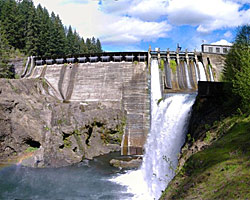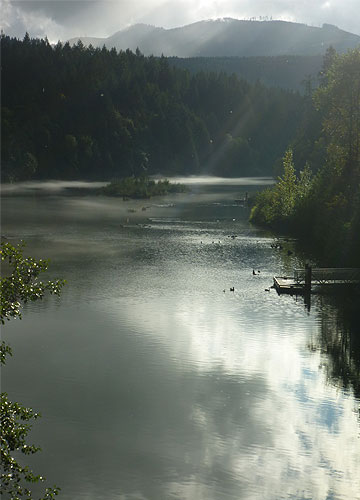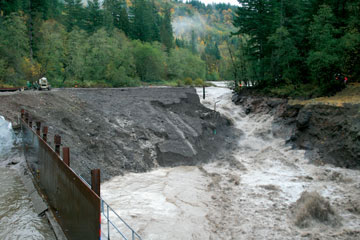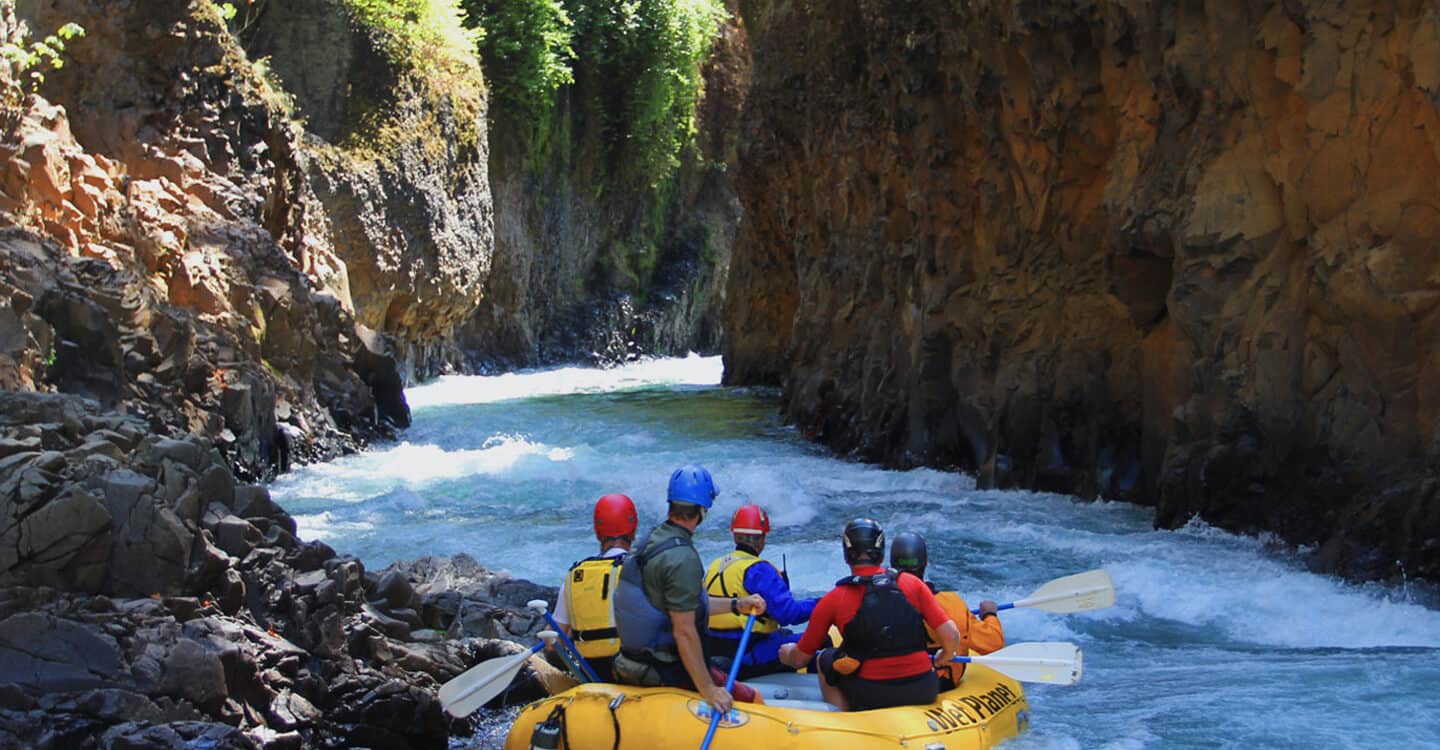By Susan Hollingsworth
We rejoiced in December, 2010 when the Federal Energy Regulatory Commission, FERC, granted the official Surrender Order for PacifiCorp’s Condit Dam hydropower license. Seemingly the last major hurdle, this Order turned on the green light for an October 2011 removal date and outlined the steps PacifiCorp must take to bring down the Condit Dam on Washington’s White Salmon River, according to the collective input of all stakeholders.

The public has awaited this momentous document for nearly twenty years. While toasting to new rapids, fish passage and a free-flowing river should continue, a volley of details, timelines and clarifications continues between PacifiCorp, stakeholders and FERC.
More indecision and red tape?
Another year of waiting before action?
Will Condit Dam ever come out?
Now hold on there Mr. Jump-to-Conclusions.
By taking a deeper look at current communications, it is easy to see that the 2011 forecast of raining concrete and a free-flowing White Salmon River is one that all stakeholders wish to see.
In response to FERC’s final Order, PacifiCorp and conservation organizations agreed upon one outstanding issue that could potentially flush the muddy sediment from the pool of concerns in one shot.
In what now appears as a simple misunderstanding of dates, FERC waived Washington Department of Ecology’s (DOE) Water Quality Certification in the official Order. DOE received PacifiCorp’s request for certification via email, an established form of contact. FERC, however, assumed this type of documentation must be filed using a hard copy (which was received 2 days after the deadline).
The result involved discounting the information and recommendations included in DOE’s certification, received in October, 2010.
Now, in a Request of Rehearing, PacifiCorp politely asks that this information be reintegrated into the Order, clarifying the acceptance of electronic communication.
In fact, the acceptance of this certification appears to remedy a slew of other PacifiCorp’s concerns, such as:
- Amount of allotted in-water time (PacifiCorp needs more to get the job done right)
- Methods of sediment management (To allow for sediment transport to be assisted for a longer period of time, as suggested by DOE’s recommendations)
- Costs incurred with restoration and possible relocation of Northwest’s Pipeline (PacifiCorp wants Northwest to address issues with their own pipeline and take logical action)
- Feasibility of fish passage methods during deconstruction (PacifiCorp wants the freedom to evaluate this method after observation of the fish, implementing additional strategies as needed)
- Sediment mapping techniques (To allow use of geotechnical testing in addition to aerial mapping and visual observations as stated in FERC’s Order, another suggestion by DOE)
- Clarifications about date for termination of power generation (Agnowledging that it will be the most efficient way to move water around the site during deconstruction)
- Separating plans for bridge reconstruction, waterline and pipeline relocation (A simple tactic to get the process jump-started with preliminary projects, making the 2011 deadline easier to meet)
Again, the majority of these concerns will fall into place with the acceptance of the Water Quality Certification, issued October, 2010.
PacifiCorp acknowledges the looming time constraint placed on the upcoming activities.
 If removing a large hydropower project meant lighting a few sticks of dynamite, then Condit Dam would have been gone long ago. However, in order for the project to successfully remove tons of debris and minimize environmental damage, an accelerated timeline is “essential to Project [Condit Dam] removal in October 2011.”
If removing a large hydropower project meant lighting a few sticks of dynamite, then Condit Dam would have been gone long ago. However, in order for the project to successfully remove tons of debris and minimize environmental damage, an accelerated timeline is “essential to Project [Condit Dam] removal in October 2011.”
PacifiCorp kindly requests that FERC consider this and evaluate these new concerns slightly faster than usual.
“PacifiCorp believes that it is a practical necessity for [us] and [our] contractor to have final Commission-proved plans by April 30, 2011 in order to have appropriate time to complete preparatory actions for implementation of such a complex endeavor,” states PacifiCorp.
Luckily, much of these concerns will be addressed and resolved with the acceptance of Washington Department of Ecology’s Water Quality Certification.
There is every reason to believe that all stakeholders want this job done correctly and timely.
Thus, an October 2011 removal date remains possible.

Removing large hydropower projects has only recently gained popularity in environmental remediation and protection efforts. Efficient methods and immediate effects remain somewhat a mystery. Despite countless professional assessments and evaluations, the power of the earth’s natural resources continues to humble humans. The recent removal of Marmot Dam on the Sandy River in Oregon reminded scientists of the unpredictable nature of rivers when the free-flowing river flushed massive quantities of sediment in an unexpectedly short amount of time. (Check out a perfect summary of Marmot Dam’s demise by Oregon Public Broadcasting.)
For the removal of Condit Dam, PacifiCorp wants to leave as much leverage for last-minute changes as a result of the river’s capricious character. Everyone can agree that a large project, such as this, warrants this extra care and attention to detail.
Those of us who want to mark the demolition and draining day on our calendars must patiently endure a few more months before confirmation, crossing our fingers for FERC’s speedy response.
Susan Hollingsworth, writer and instructor, is interested to hear what you have to say about Condit Dam…comment below!







